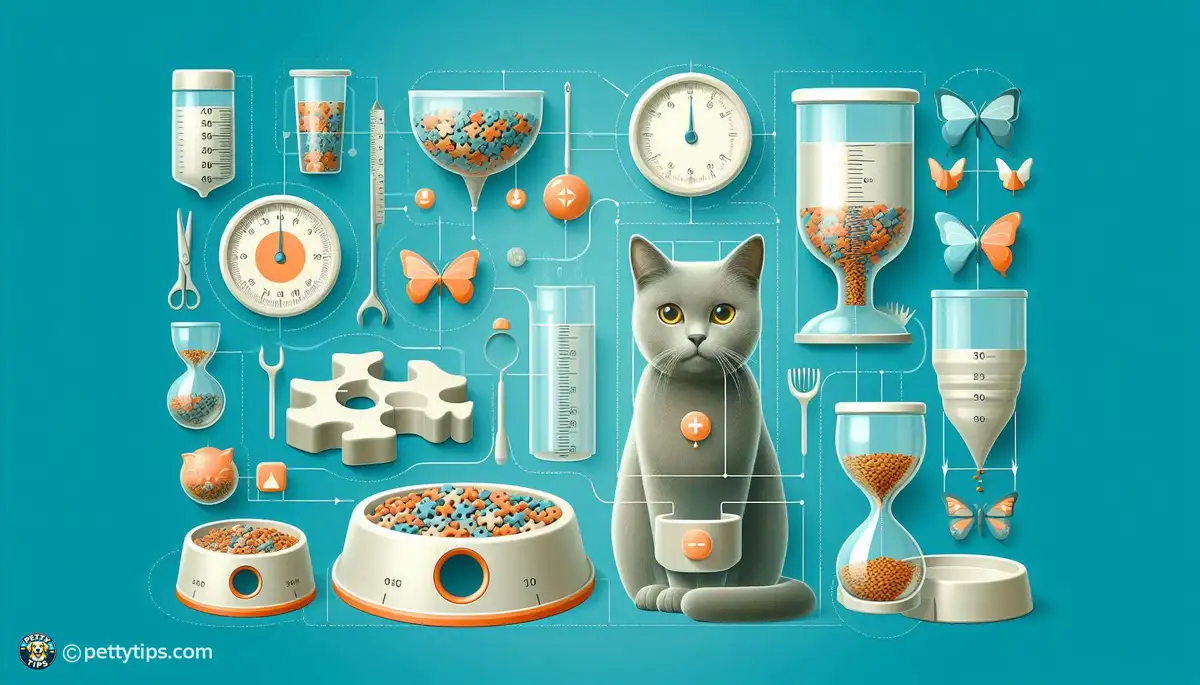
The Role of Play in Cat Socialization
Caleb O'Donnell - Sep 29, 2024 - 7 min read


portion control isn't just about limiting your cat's food intake; it's about ensuring they receive the right balance of nutrients to maintain optimal health. Many cats are prone to overeating, which can lead to obesity and a range of health issues. By mastering portion control, you can help your feline friend maintain a healthy weight and live a longer, happier life.
Overfeeding is a common problem among cat owners, often fueled by a desire to show love through food or a lack of awareness about appropriate portion sizes. However, excessive food intake can lead to obesity, diabetes, joint problems, and other serious health issues in cats. It's essential to understand the risks associated with overfeeding and take proactive steps to prevent them.
Portion control isn't just about restricting food; it's about finding the perfect balance for your cat's unique needs. Factors such as age, weight, activity level, and health status all play a role in determining the appropriate portion size. Consulting with your veterinarian can help you establish a tailored feeding plan that meets your cat's specific requirements.
Eyeballing your cat's food portions can lead to overfeeding. Invest in a set of measuring cups or a kitchen scale to ensure precise portion sizes. Follow the feeding guidelines provided by your cat's food manufacturer, but be prepared to adjust based on your cat's individual needs.
Establishing a regular feeding schedule can help prevent overeating and promote healthy eating habits. Divide your cat's daily food allowance into several smaller meals throughout the day, rather than leaving food out for free feeding. This approach mimics a cat's natural hunting behavior and can prevent them from consuming too much food at once.
Regularly assessing your cat's body condition can help you determine if you're providing the right amount of food. Ideally, you should be able to feel your cat's ribs without pressing too firmly. If your cat's waistline is disappearing or they're starting to resemble a bowling ball, it may be time to adjust their portion sizes.
Some cats are experts at begging for food, making portion control a constant battle. It's essential to resist the urge to give in to their demands and stick to the feeding plan you've established. Providing plenty of mental and physical stimulation through play and enrichment activities can help distract your cat from fixating on food.
If you have multiple cats, managing portion control can be more challenging, especially if they have different dietary needs. Consider feeding them in separate areas to prevent one cat from eating the other's food. You may also need to use portion control feeding stations or interactive feeders to ensure each cat gets the right amount of food.
Some cats may have food allergies or sensitivities that require special dietary considerations. If you suspect your cat is reacting poorly to their food, consult with your veterinarian to identify potential allergens and explore alternative diet options. Proper portion control is essential, even when making dietary changes, to prevent overfeeding or underfeeding.
As your cat's needs change over time, you may need to adjust their portion sizes accordingly. Factors such as age, activity level, and health status can all impact how much food your cat requires. Keep an eye on your cat's body condition and consult with your veterinarian if you're unsure about the appropriate portion size.
Every cat is unique, so it may take some trial and error to find the portion control strategy that works best for your furry friend. Experiment with different feeding methods, such as timed feedings, puzzle feeders, or interactive toys, to see what keeps your cat satisfied without overeating. Don't be afraid to get creative and tailor your approach to suit your cat's preferences and lifestyle.
If you're struggling to manage portion control or have concerns about your cat's weight, don't hesitate to seek professional guidance from your veterinarian or a certified animal nutritionist. They can offer personalized recommendations based on your cat's individual needs and help you develop a comprehensive plan for maintaining optimal portion control.
Mastering portion control is essential for ensuring your cat maintains a healthy weight and enjoys a high quality of life. By understanding the importance of portion control, implementing effective strategies, and fine-tuning your approach as needed, you can help your feline friend thrive for years to come. Remember, a little bit of discipline and a lot of love are the keys to success when it comes to managing portion control in cats.